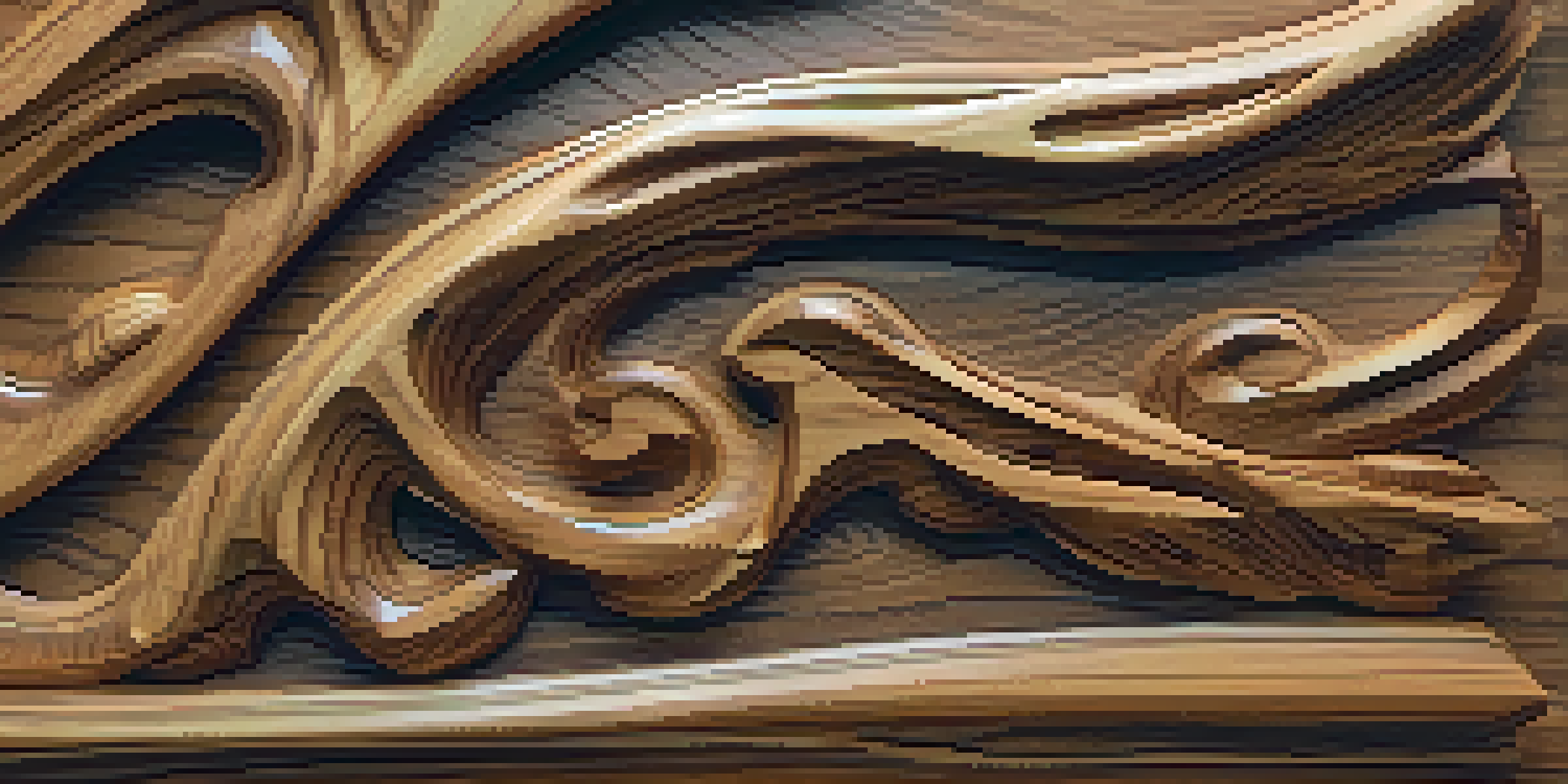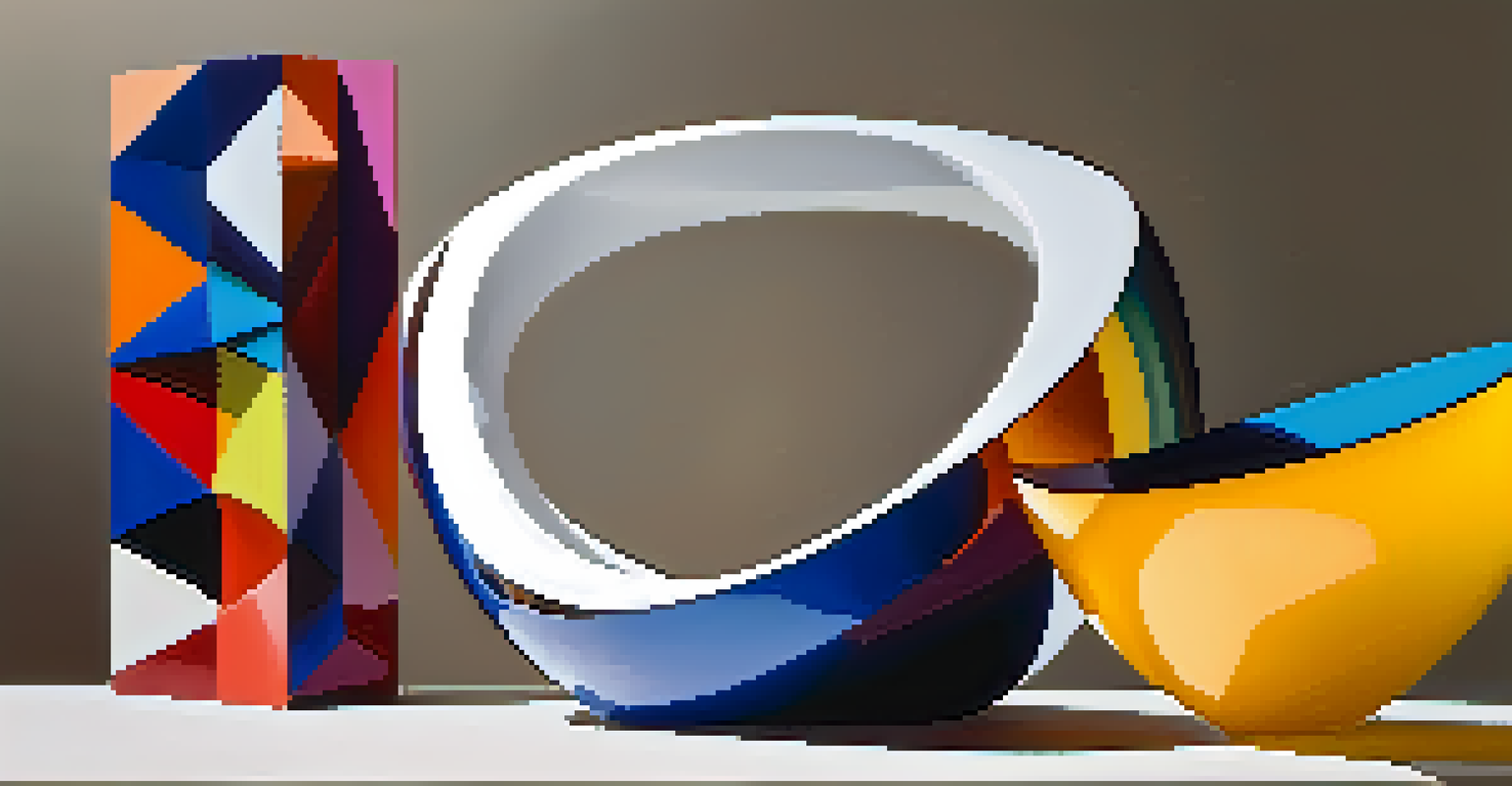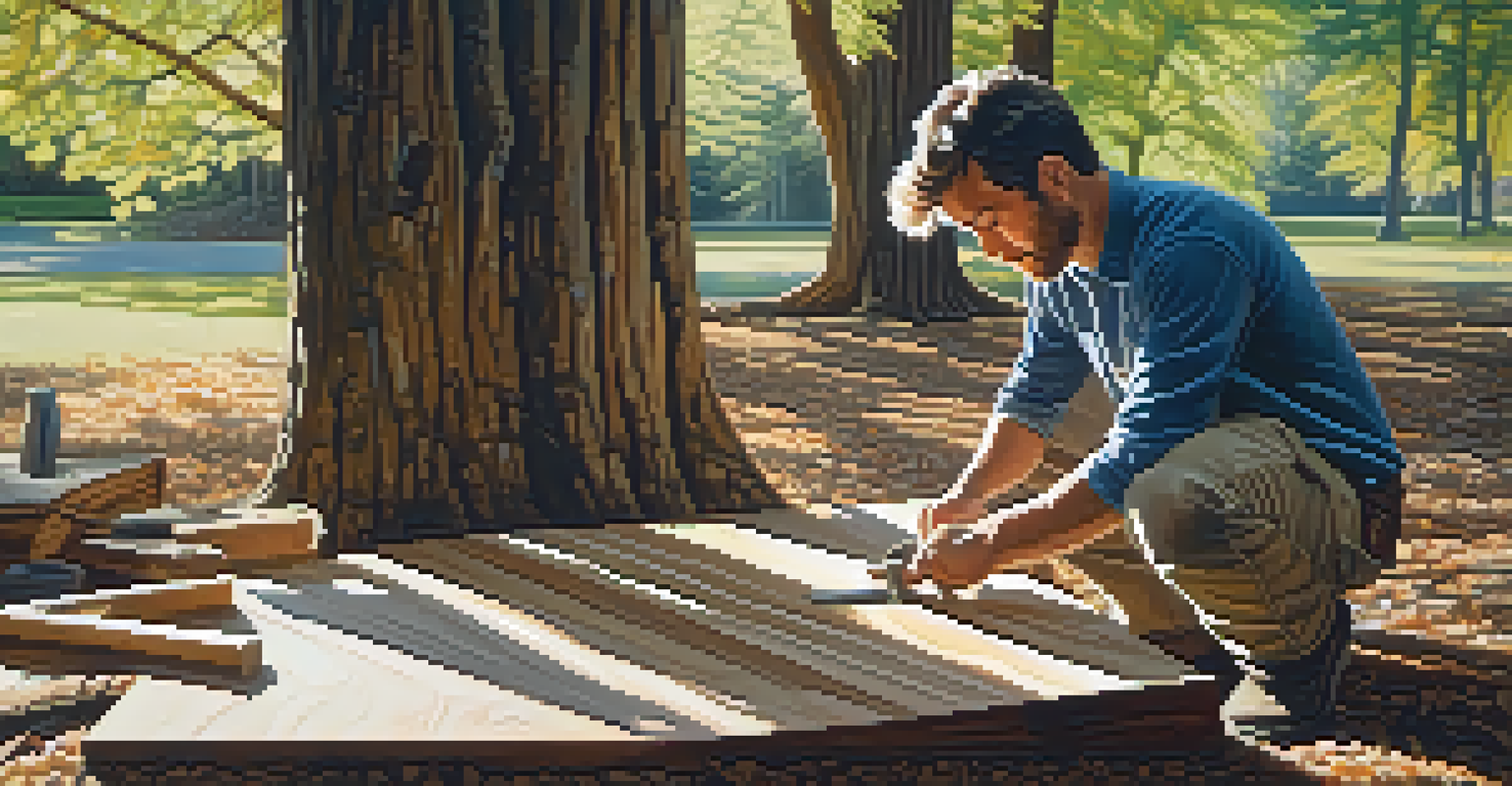Investigating Materials Used in Contemporary Carving Art

The Evolution of Materials in Carving Art
Carving art has a rich history, evolving from traditional to contemporary techniques. In the past, artists primarily used wood, stone, and bone, each requiring specific skills and tools. Today, the landscape has expanded significantly, incorporating a variety of materials that reflect modern aesthetics and functionality. This shift not only enhances artistic expression but also challenges our perceptions of what carving can be.
Art is not what you see, but what you make others see.
Modern artists are now exploring unconventional materials like acrylic, metal, and even recycled objects. Each material brings its own unique properties, allowing for diverse textures, forms, and finishes. For instance, acrylic can be manipulated to create vibrant, see-through sculptures, while metal adds a sleek, industrial edge. This experimentation opens up a world of possibilities, pushing the boundaries of traditional carving.
As we delve deeper into contemporary carving, it becomes evident that the chosen materials play a crucial role in the artist's message. The significance of these materials often reflects themes of sustainability, innovation, and cultural identity. By understanding the evolution of materials, we can appreciate the rich narratives that contemporary carvers are weaving into their work.
Sustainable Materials: A Trend in Modern Carving
Sustainability has become a cornerstone in contemporary art, including carving. Artists are increasingly opting for eco-friendly materials that minimize environmental impact, such as reclaimed wood or bamboo. This choice not only promotes environmental stewardship but also gives a unique character to the artworks, as each piece tells a story of its previous life.

For example, using reclaimed wood allows artists to create stunning pieces while reducing waste and conserving resources. The natural imperfections and variations in color and texture add depth to the carvings, making them one-of-a-kind. This approach resonates with audiences who value sustainability and craftsmanship, creating a deeper connection to the work.
Diverse Materials Shape Modern Carving
Contemporary carving art has expanded beyond traditional materials to include acrylic, metal, and recycled objects, enhancing artistic expression and challenging perceptions.
Furthermore, the trend toward sustainable materials encourages a dialogue about our relationship with nature and the resources we consume. Carvers utilizing these materials often highlight themes of conservation and respect for the environment, inviting viewers to reflect on their own practices. As we appreciate these artworks, we also become part of the larger conversation about sustainability in the art world.
Innovative Techniques: Carving in the Digital Age
The advent of technology has significantly impacted contemporary carving techniques. Digital tools and software have opened up new avenues for artists, allowing them to design intricate patterns and models with ease. This integration of technology, such as CNC (Computer Numerical Control) machines, empowers artists to create precise and complex forms that would be challenging to achieve by hand.
Sustainability is not a goal to be reached, but a way of thinking and acting.
For instance, artists can now carve intricate designs into materials like stone or wood with unprecedented accuracy, giving rise to stunning works that blend traditional craftsmanship with modern precision. The ability to reproduce designs digitally means that artists can experiment and iterate more freely, leading to innovation in their creative processes. This fusion of technology and artistry encourages a rethinking of conventional carving methods.
However, this digital shift also raises questions about authenticity and the value of hand-carved art. While some purists may argue that the soul of carving lies in manual techniques, others embrace the new possibilities that technology presents. Ultimately, the conversation around digital carving invites us to consider how innovation can coexist with tradition in the ever-evolving landscape of contemporary art.
Exploring Textures: The Role of Material Choice
Texture plays a vital role in carving art, influencing how viewers interact with a piece. The choice of material directly affects the tactile and visual qualities of the artwork. For example, a rough-hewn wooden sculpture invites touch and engagement, while a smooth, polished stone piece may evoke a sense of contemplation.
Artists often experiment with various textures to create dynamic contrasts within their works. By layering materials or combining different finishes, they can evoke emotions and reactions from their audience. This interplay of textures not only enhances the aesthetic appeal but also deepens the viewer's experience, encouraging a more intimate connection with the art.
Sustainability Drives Artistic Choices
Artists increasingly prioritize eco-friendly materials like reclaimed wood, fostering a deeper connection with their work and promoting environmental stewardship.
In contemporary carving, the exploration of texture is not just a stylistic choice; it often carries deeper meaning. Artists may use texture to symbolize themes such as resilience, impermanence, or the passage of time. By examining the textures in contemporary carving, we gain insight into the artist's intent and the emotional resonance of their work.
Cultural Influences on Material Selection
Cultural heritage plays a significant role in the materials chosen by contemporary carvers. Artists often draw inspiration from their backgrounds, using materials that reflect their cultural identity and traditions. For instance, Indigenous artists may utilize local woods or stones, connecting their work to their ancestral land and practices.
This cultural infusion not only enriches the artwork but also educates viewers about the significance of these materials. By highlighting their heritage, artists can share stories and traditions that might otherwise be overlooked. This connection between material and culture adds layers of meaning to the carving, allowing for a more profound appreciation of the art.
Moreover, as globalization continues to influence contemporary art, we see a blending of materials and techniques from various cultures. This cross-pollination fosters innovation while honoring tradition, creating a tapestry of artistic expression that transcends borders. As artists navigate this cultural landscape, the materials they choose become a dialogue between past and present.
The Impact of Color in Contemporary Carving
Color is another crucial element in contemporary carving art, often used to evoke emotions and convey messages. Artists are now experimenting with vibrant hues and bold contrasts, transforming traditional monochromatic pieces into lively expressions. By incorporating color into their carvings, artists can enhance the visual impact and draw viewers in.
Materials like acrylics and resins allow for a wide range of colors that can be applied in various ways, from painting to layering. This versatility enables artists to create striking effects that captivate the eye and provoke thought. For example, a brightly colored carving can symbolize joy and vitality, while darker shades may evoke melancholy or introspection.
Technology Transforms Carving Techniques
The integration of digital tools and CNC machines into carving allows for unprecedented precision and creativity, while sparking discussions about the authenticity of traditional methods.
The use of color in carving art also invites viewers to engage with the piece on a deeper level. Color can alter our perceptions and feelings, creating a unique experience for each observer. As artists continue to push the boundaries of color in their work, they inspire us to see carving art in a new light, appreciating not just the form but the emotional resonance behind it.
Future Trends in Materials for Carving Art
As we look ahead, the future of materials in contemporary carving art is poised for exciting developments. Innovations in synthetic materials and composites could revolutionize how artists create and what they choose to work with. These materials might offer enhanced durability, flexibility, and even the ability to respond to environmental changes, opening up new creative possibilities.
Moreover, the increasing emphasis on sustainability is likely to shape future trends, pushing artists to explore biodegradable and renewable materials. As awareness of environmental issues grows, we can expect to see more carvers prioritizing eco-conscious choices in their work. This shift not only reflects changing values but also challenges artists to think creatively about their impact on the planet.

In addition, collaboration between artists and scientists may lead to groundbreaking materials that enhance the artistic process. This fusion of art and science could result in unexpected textures, colors, and forms that redefine carving. As we embrace the future, the materials used in contemporary carving will undoubtedly continue to evolve, inspiring new generations of artists and audiences alike.